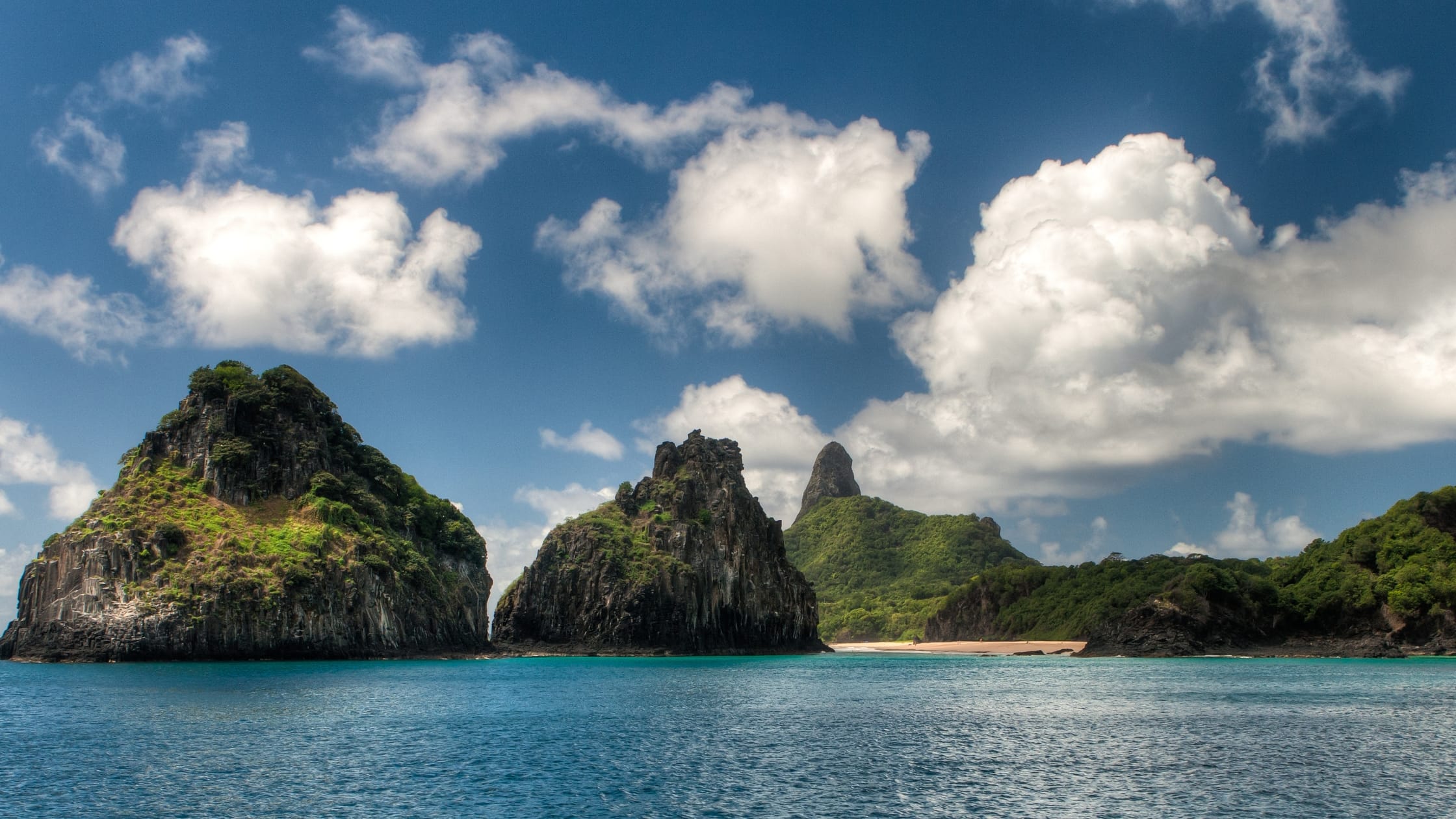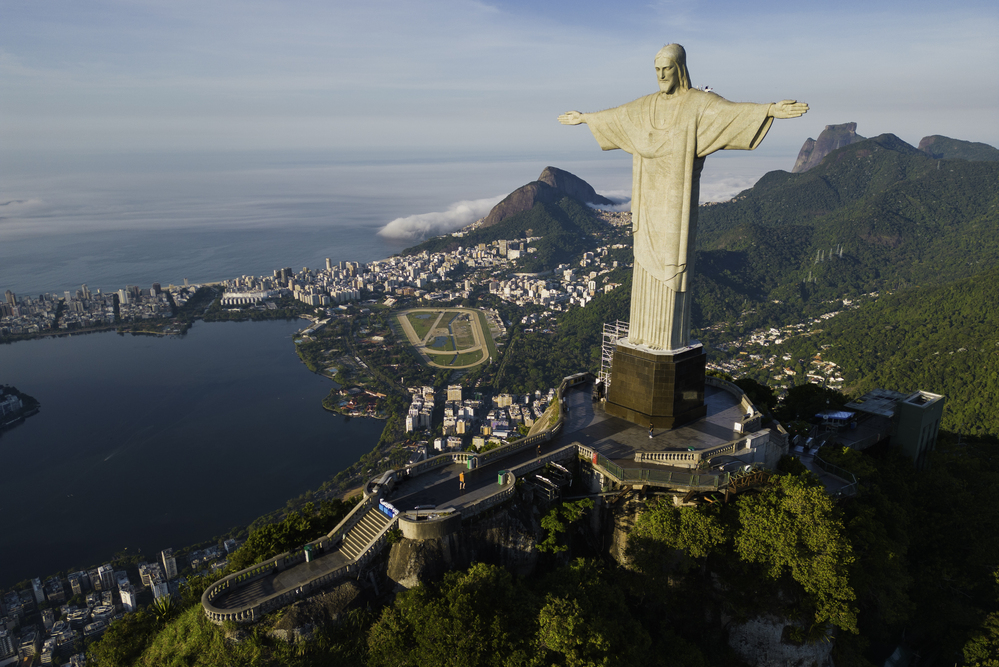Fernando de Noronha is the kind of place that makes anyone rethink the meaning of the word beauty. Imagine an archipelago in the middle of the Atlantic, where the sea has so many shades of blue that it almost looks like a montage. And the best part: it’s in Brazil, about a 2-hour flight from Recife or Natal.
In this article, I will tell you everything about this hidden paradise in Brazil. Keep reading to learn more.
What is Fernando de Noronha like?
Fernando de Noronha is an archipelago with just over 20 islands, but only one is inhabited. It’s as if the place was hand-sculpted just for you to relax, dive, and fall in love. The beaches are cinematic, like Baía do Sancho, which has been voted several times as one of the most beautiful in the world.
Noronha is small in size but giant in experience. The main island is just over 17 kilometers long, smaller than many inland cities, but with a biodiversity that can’t fit in a photo. Sea turtles, dolphins, sharks, and colorful fish coexist there like in a large natural aquarium.
One charming curiosity: spinner dolphins appear there almost every morning. They love to put on a show at Baía dos Golfinhos. It’s no wonder many people leave the island already dreaming of coming back.
So, if you’re looking for a different, wild, and dream-like destination, Fernando de Noronha will win you over with the first dive. But be prepared: as many visitors and residents report, Noronha is not a destination for those seeking conventional luxury of “all-inclusive” resorts or for those with a very tight budget. The island is rustic, costs are high, and the experience is focused on nature and preservation.
Where is Fernando de Noronha?
Fernando de Noronha is in Brazil. Literally, it’s an archipelago in the middle of the Atlantic Ocean, more than 300 kilometers from the northeastern coast. The closest point to the mainland is Natal (RN), but flights usually depart from Recife (PE) or Natal itself. In about an hour and a half in the air, you land in one of the most beautiful places in the country.
The island belongs to the state of Pernambuco, even though it’s far from the coast. You could even say it’s a kind of “lonely island,” as if it distanced itself from the mainland to live its own story. The archipelago consists of 21 islands, but only one is inhabited: the Island of Fernando de Noronha. The others are preserved, and access is prohibited to protect the local fauna and flora.
It’s a true oasis in the open sea. When the plane starts to descend, you can already see the sea in absurd shades of blue and green. It looks like a painting. And even though it’s isolated, Noronha has the infrastructure to welcome you, with an airport, inns, restaurants, and internal transportation. In Noronha, you will dive with dolphins, walk among cliffs, and watch the sun set into the sea.
What is life and energy like in Fernando de Noronha?
The island has a light, quiet, and wild atmosphere at the same time. You will notice that everything there revolves around nature. The streets are simple, many of them dirt or cobblestone, with low houses, charming inns, and small restaurants full of personality. The vibe is relaxed. You won’t find shopping malls, giant resorts, or crowded beaches with loud music. Instead, you’ll see people in flip-flops, divers carrying tanks, fishermen pulling nets, and families watching the sunset in silence as if witnessing a miracle.
Noronha has its own rules and a strong focus on preservation. To visit some places, such as the trails of the Marine National Park (PARNAMAR), you need to schedule in advance and, in some cases, attend an orientation lecture upon arrival.
The local agency Atalaia is one of the most traditional for organizing these tours, but some registrations, especially for more popular trails, may need to be done online or directly at the ICMBio (Chico Mendes Institute for Biodiversity Conservation) headquarters on the island.
This control may seem excessive, but it is precisely what keeps the place so preserved. The beaches don’t have many vendors, chairs, or umbrellas; everything is more rustic, and that is part of the charm.
Infrastructure and Costs
This is a crucial point that many visitors, especially foreigners, need to understand before going. Fernando de Noronha is an expensive destination. Those who have been there always complain: “nothing is cheap there.” From mineral water (a 20L gallon can cost R$30, a small bottle R$9), toothpaste (R$8 for a small tube), to meals (a self-service can reach R$100/kg) and buggy rentals. Residents report that the cost of living is high, and tourists feel this directly.
Electricity is generated by diesel thermoelectric and is more expensive. Drinking water is desalinated. There may be shortages of basic items in markets, including vegetables and gallon water. The internet (4G and Wi-Fi in public squares or via satellite in establishments) is usually unstable and slow. Deliveries from the mainland can take weeks.
Although tourists are well treated as they are the main source of income, there may be inflated prices for tourists in smaller establishments, especially if the visitor seems naive. It is also worth noting that basic health services are limited; any procedure more complex than a cast requires travel to the mainland. In fact, pregnant women from the seventh month are required to leave the island to give birth on the mainland due to the lack of hospital infrastructure for childbirth.
What to do in Fernando de Noronha?
If you think Fernando de Noronha is just about beautiful beaches, get ready. The island will surprise you with so much to see, experience, and feel. Every little corner offers a unique experience, from trails through the forest to dives that look like movie scenes.
Start with the Island Tour
On the first day, it’s well worth doing the so-called Island Tour. It’s a full-day tour that takes you to the main tourist spots on the island. You visit several beaches, viewpoints, and learn a bit about the local history with the guides, who are usually residents passionate about the place. It’s a good way to get your bearings and choose where you want to return to more calmly later.
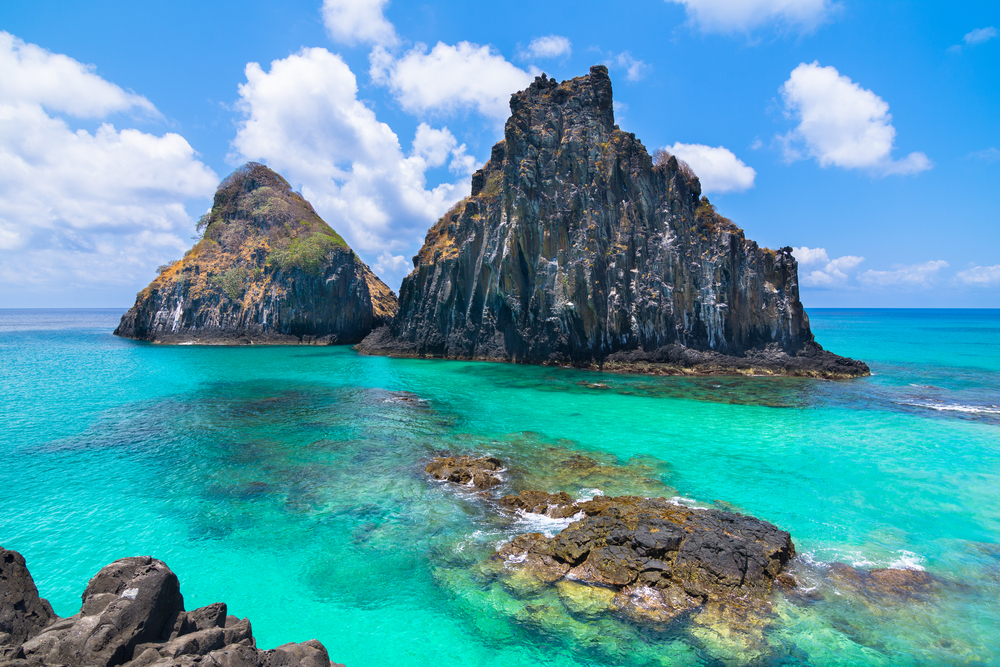
Diving: Half of Noronha is underwater
If you don’t dive, maybe in Fernando de Noronha you’ll start thinking about it? Noronha has one of the clearest and richest seas in Brazil. Doing a baptism (first dive with a tank and instructor) can be the highlight of the trip.
An interesting fact is that even the most experienced divers claim that the archipelago is one of the best diving spots on the planet, as there are few places with an average water temperature of around 26°C and visibility of up to 50 meters. Not to mention the shipwrecks and the richness of marine life in its 20 diving spots.
Oh, and don’t worry if you’re a novice, there are activities for beginners, experienced divers, and even courses and technical dives with various modalities offered. A very important point is that one of the rules of the Marine National Park is the accompaniment by accredited divers who ensure the visitor’s safety and environmental preservation.
But if you’re not ready for that yet, no problem: just putting on a snorkel and diving into places like Praia do Sueste or Baía do Sancho will already leave you amazed. Colorful fish, turtles, and even small sharks (harmless, usually nurse sharks) come very close. There are reports from travelers who consider diving essential for the Noronha experience.
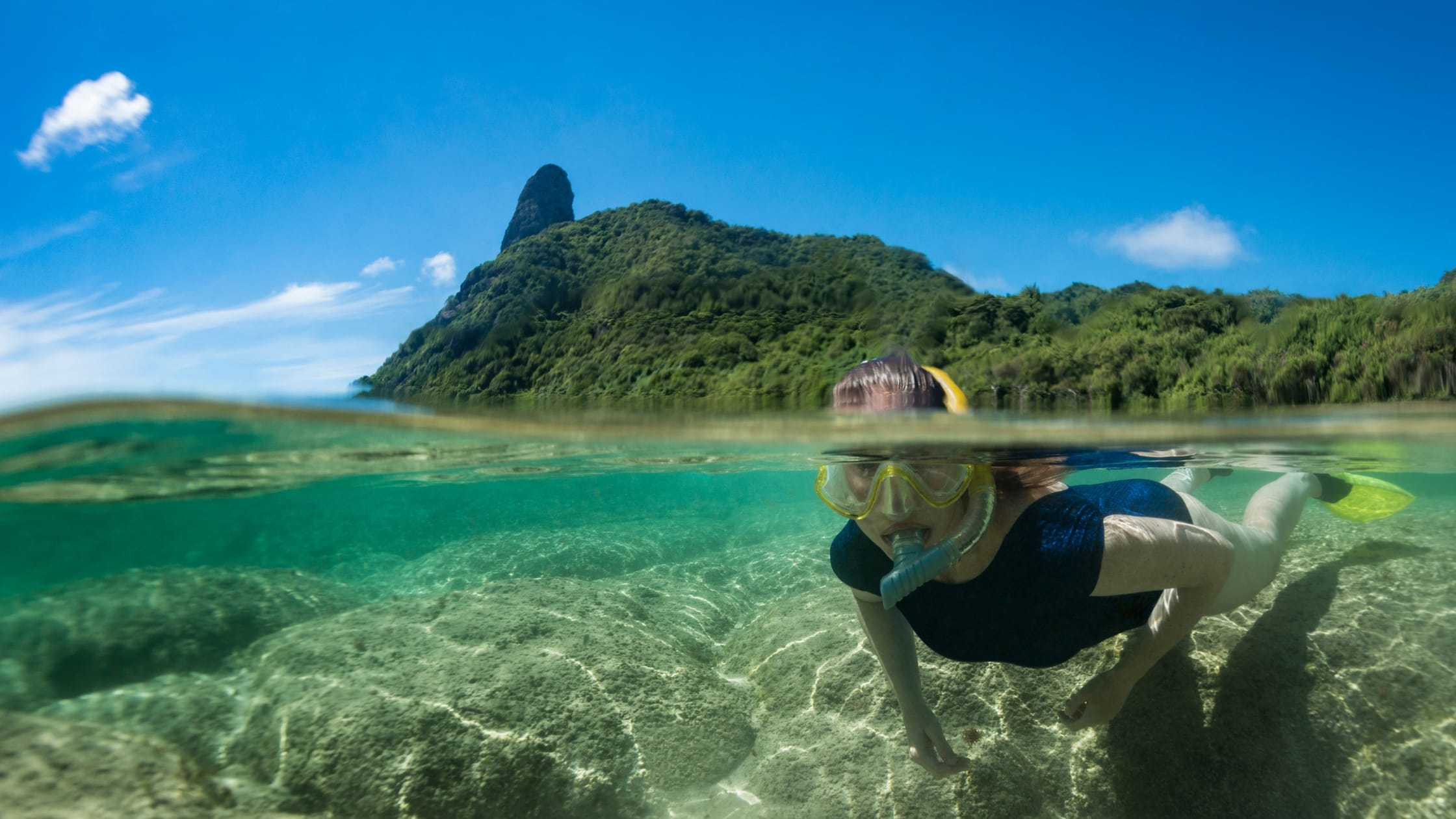
Trails: Walks that lead you to true paradises
Noronha has several trails within the National Park, and some require prior scheduling and participation in an orientation lecture. One of the most well-known is the Atalaia Trail, which leads to natural pools where you snorkel. But there are also trails that end in spectacular viewpoints or hidden bays, like Baía dos Golfinhos.
The trail access is through Vila do Trinta. The round-trip route is 3km. The natural aquarium, a nursery for octopuses, sharks, moray eels, and various species of ornamental fish, has a daily visitation limit. The visit must be scheduled with ICMBio. The trail is self-guided.
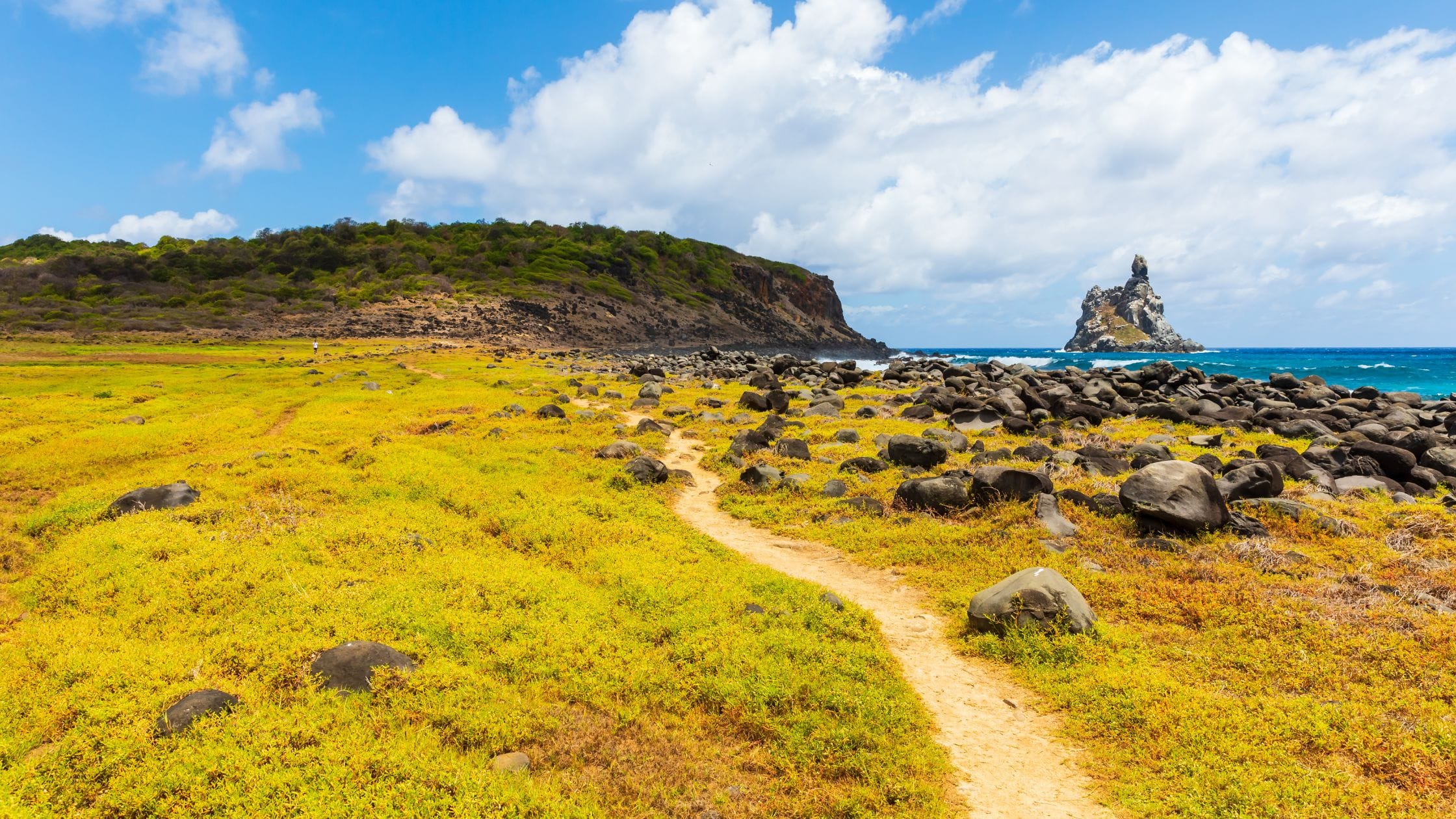
Sunset: A Daily Spectacle You Can’t Miss
Watching the sun set over the sea is already beautiful. Now imagine that with Morro Dois Irmãos in the background. The sunset at Mirante do Boldró is a classic on the island. People gather there in the late afternoon, eating something or having a drink, all very relaxed. Sometimes there’s even live music. It seems simple, but it’s one of those experiences that stay in your memory.
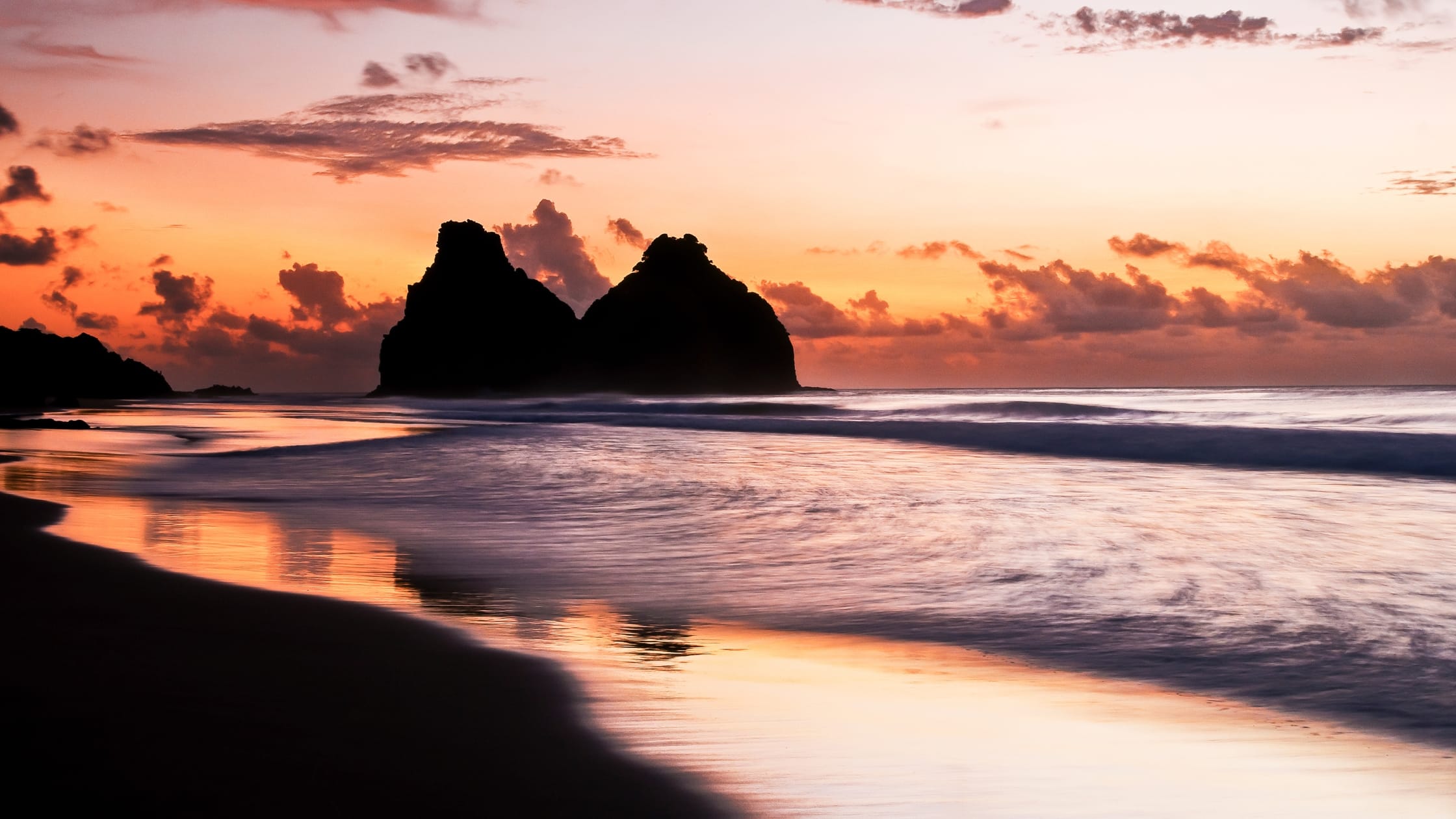
Swimming with Turtles at Sueste Beach
At Sueste Beach, you can have one of those experiences that stay with you forever. With the mandatory flotation vest (which you can rent right there), you calmly enter the water (without stepping on the bottom) and soon start to see the stars of the place: the sea turtles. They feed there, in the right corner of the beach, and swim slowly, almost as if they were inviting you for a ride.
You can go on your own, but it’s really worth hiring a guide who knows the best spot and helps keep everything safe and respectful with the animals. This experience is simple, inexpensive, and absolutely enchanting. Just don’t forget: the use of sunscreen is not allowed during the dive, for environmental reasons.
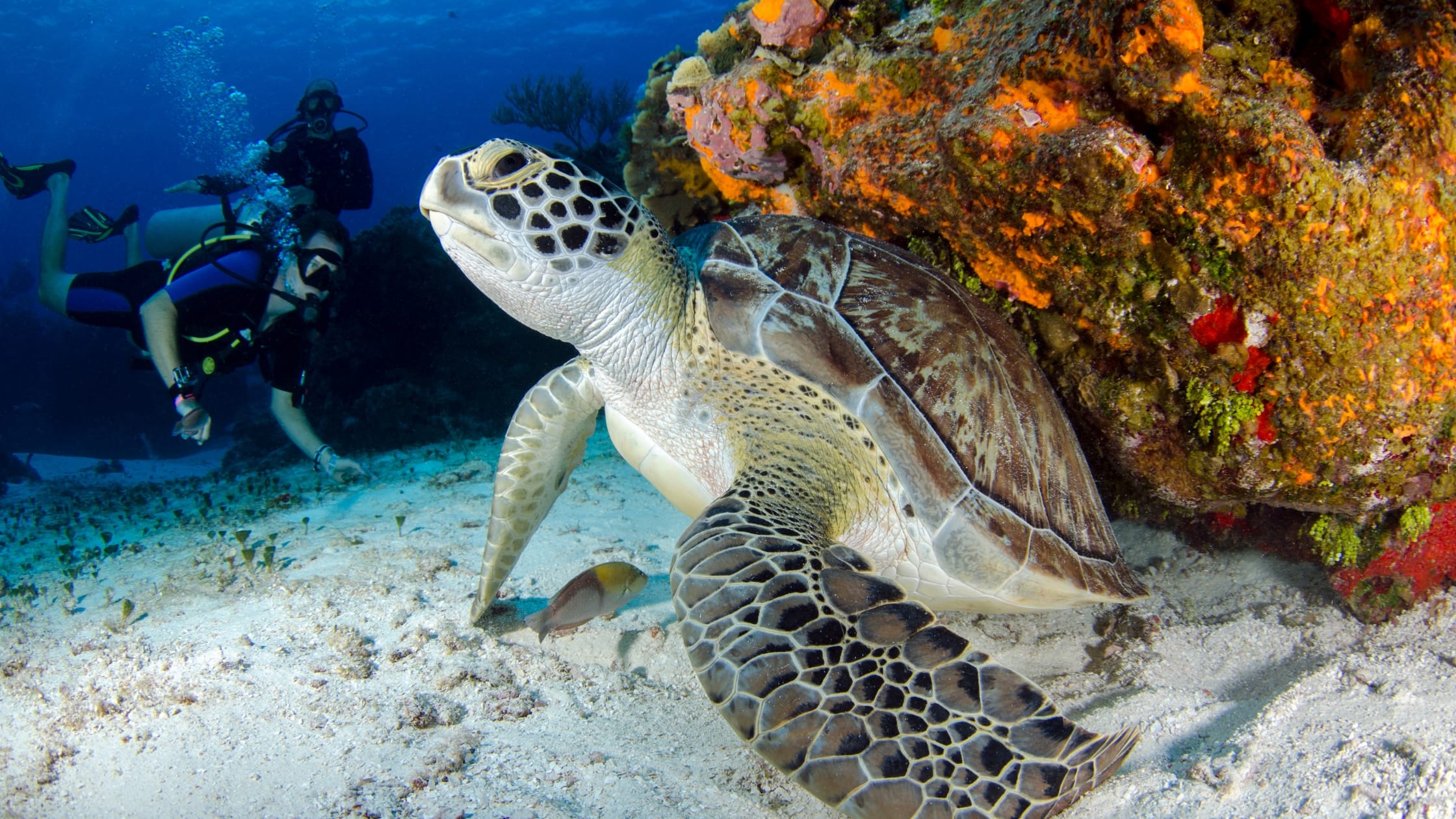
Diving at the Shipwreck of Porto Beach
If you’ve never scuba dived and want to start with something remarkable (and more affordable), the shipwreck at Porto Beach is the right place. This introductory dive takes place close to the coast and doesn’t require a boat trip, which significantly reduces the cost of the excursion. There, at the bottom of the sea, lies an old ship covered in corals and surrounded by colorful fish. Visibility is usually good, and the view is impressive, even for those who already have some experience.
Local operators provide full support, with experienced instructors guiding you from start to finish. It’s a quick, safe dive, perfect for those who want to get a taste of Noronha’s underwater world without spending too much. A great first step to falling in love with diving.
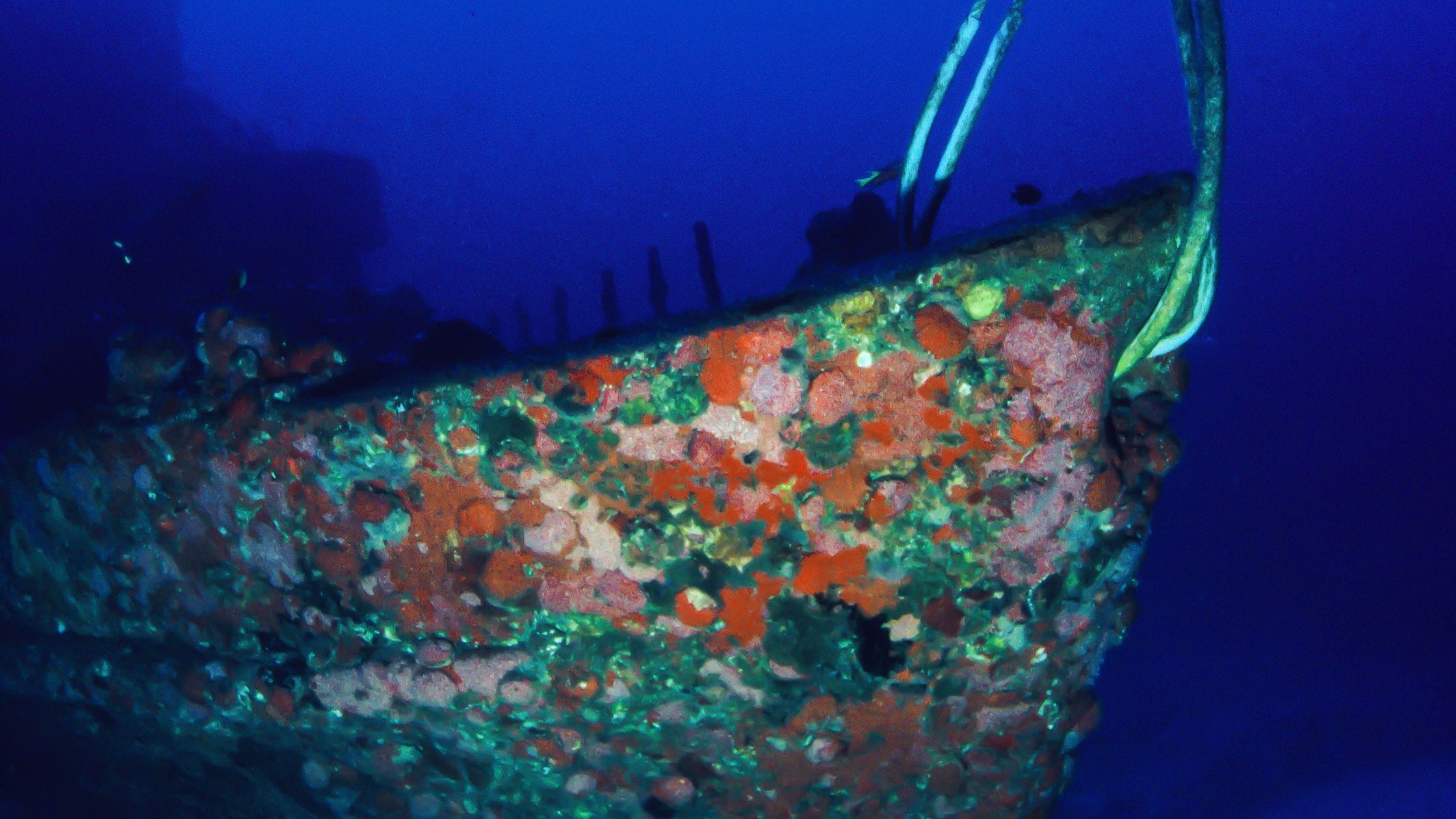
Projeto Tamar Lectures
The nights in Noronha also have their magic, and the Projeto Tamar lectures are a great way to enjoy them. They take place at the ICMBio auditorium in Vila do Boldró and are like a live documentary. Enthusiastic and experienced biologists tell stories about marine life, explain curiosities about turtles, dolphins, sharks, sponges, plastics in the oceans, and much more. All with accessible, engaging language and plenty of good humor.
It’s the kind of program that appeals to both biology lovers and those who just want to better understand what they saw during the day’s dive. Besides being informative, it’s free and a good way to support the conservation work done on the island. A different experience, but as remarkable as any beach.
Sunset at Forte do Boldró with “Bolero de Ravel”
Watching the sunset in Noronha would already be magical anywhere, but at Forte do Boldró it gains an almost theatrical touch. That’s because, while the sun dips into the sea behind Morro Dois Irmãos, the famous “Bolero de Ravel” plays in the background. The soundtrack gives a cinematic feel to the moment, and many people get emotional right there, sitting on the rocks or at the bar tables.
The place usually gets crowded in the late afternoon, as it’s the final stop of the Ilhatour. You can get there on your own, but there’s a catch: the access is not directly from Vila do Boldró, but from the Basinha stop. A light walk and you arrive at the island’s most famous natural balcony.
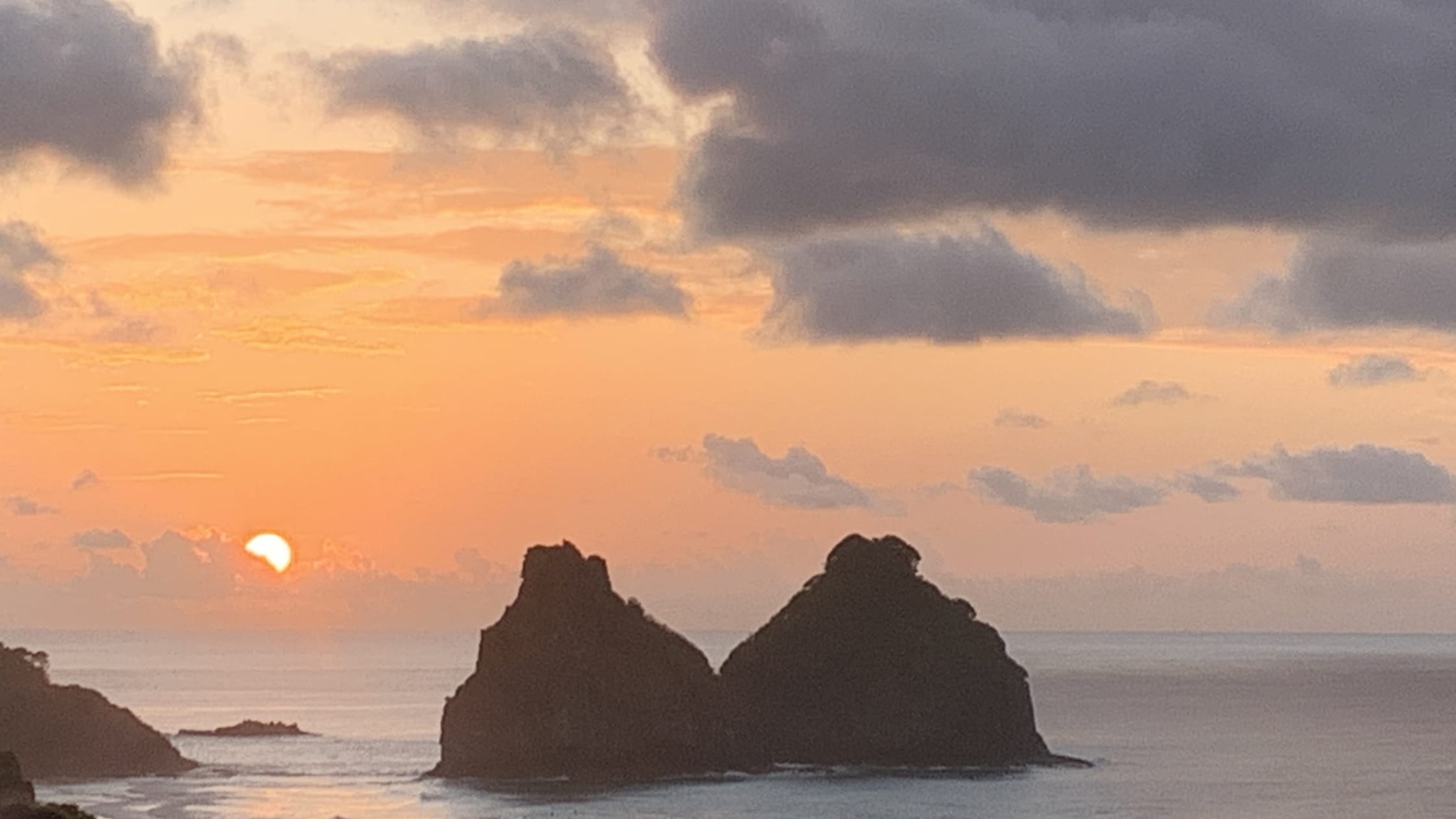
Piquinho Trail
If you enjoy trails with breathtaking views but without bureaucracy, the Piquinho Trail is perfect. It’s only 800 meters (round trip), doesn’t require scheduling or a National Park ticket, and the view at the end is worth every step. The path starts near Pousada Teju-Açu, on Conceição Road, and climbs up to a lookout with an open view of Morro do Pico and the Mar de Dentro.
The final ascent has a rope to help with the last few meters, but it’s not too strenuous. It’s a good exercise and an excellent option for those who want to do something different, quick, and off the more touristy route. If you go at dusk, bring a flashlight — the return will be in the dark.
Natural Pools Circuit
For those who love crystal-clear water and tranquility, the Natural Pools Circuit is a hidden gem. This tour passes through three natural pools formed between volcanic rocks: Buraco do Galego and Lasca da Velha (at Praia do Cachorro) and the Morro de Fora Pool (between Praia do Meio and Conceição).
It’s done in small groups, making everything more exclusive and peaceful. The circuit only happens outside the swell season, when the sea is calm and the tide is low enough. The guide shows you the best spots, and you can swim calmly, take beautiful photos, and enjoy the scenery. It’s a light, refreshing program perfect for those who want a break between trails and dives.
Conceição Beach
If there’s a place in Noronha that combines natural beauty with a bit more structure, it’s Conceição Beach. There you find two beloved options: Bar do Meio, with a more sophisticated style and incredible view, and Barraca do Duda Rei, more laid-back and relaxed. The beach is great for those who want to spend the whole day enjoying the sea without giving up a cold drink or a snack.
The sunset here is also beautiful, and the energy tends to be more lively in the late afternoon. You can relax on the sand, swim calmly, and then join an informal luau or live music. It’s the perfect balance between nature and comfort.
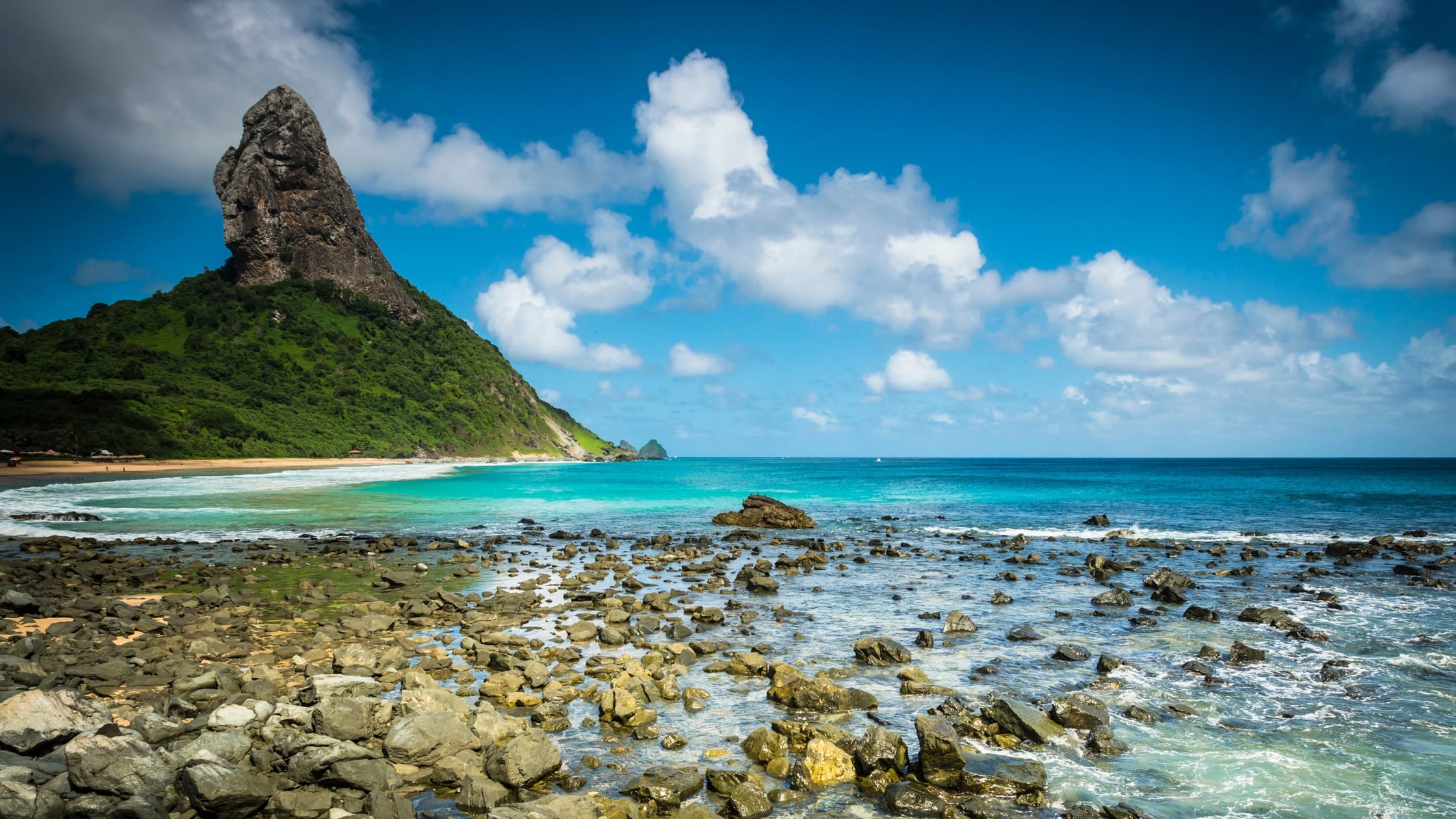
How long to stay?
To truly absorb the magic of Noronha, it’s ideal to plan a stay of 4 to 7 days. With 4 days, you can visit the most famous landmarks. With a week, you’ll have the chance to explore everything more calmly.
Where to stay?
Noronha doesn’t have “all-inclusive” resorts. Accommodation is predominantly in inns, ranging from simple to charming and more luxurious, such as Pousada Maravilha or Zé Maria, often cited as high-standard options but with high daily rates. Mid-range inns can have daily rates between R$1,000 and R$1,500, and the simpler ones around R$500 (reference values for 2025, subject to change). It’s crucial to book well in advance, especially in high season. Vila dos Remédios is a central and popular area.
Best time to visit Fernando de Noronha
The choice of time depends on your goal:
- Calm Sea (Flat) and Snorkeling/Diving: August to October. The sea looks like a pool, ideal for beginners and those seeking tranquility.
- Sunny weather. Surf (Swell): December to March. Strong waves, ideal for surfers. Summer, long and hot days. January and February are the busiest and most expensive months.
- Rainy Season: April to July (April, May, and June are the rainiest). Island emptier, potentially lower prices. Intermittent rains with sun. The sea can also be calm between April and September.
How to get to Fernando de Noronha
The only practical way is by air, with flights departing from Recife (PE) and Natal (RN). Azul, Gol, and LATAM operate these routes. The Governador Carlos Wilson Airport (FEN) has had infrastructure problems on the runway, undergoing renovations, which can occasionally affect operations or types of aircraft allowed. Check the situation before traveling. There are no direct international flights. Foreign travelers must connect through Recife or Natal.
Documentation and Requirements for Foreigners
Brazil’s visa policy is generally based on reciprocity. However, there have been recent updates that travelers should be aware of. As of April 10, 2025, Brazil reinstated the visa requirement for citizens of Australia, Canada, and the United States. This means that citizens of these countries will need to obtain an electronic visit visa (e-visa) before traveling. The e-visa application process is usually done online, simplifying the procedure for tourists.
For citizens of many European Union (EU) countries and the United Kingdom, the visa exemption for tourism purposes generally remains in effect for stays of up to 90 days within a 180-day period. This is usually based on bilateral agreements. (Ministry of Foreign Affairs of Brazil, 2022).
However, it is crucial that all travelers, regardless of nationality, check the most current visa requirements well in advance of their planned travel dates, as policies can change. The official website of the Ministry of Foreign Affairs of Brazil or the nearest Brazilian consulate or embassy in your country of residence are the most reliable sources for updated information. (Ministry of Foreign Affairs of Brazil, 2022).
Generally, to apply for a tourist visa (VIVIS – Visit Visa), if necessary, or to enter with visa exemption, you will need a passport valid for at least six months beyond your intended stay in Brazil and with at least one blank page for stamps. You may also be required to present proof of sufficient funds for your stay, proof of accommodation (such as hotel reservation), and a return or onward ticket. (Intrepid Travel, n.d.).
Vaccine: Yellow fever is recommended if visiting other risk areas in Brazil. Check your country’s health recommendations.
Mandatory Fees
- Environmental Preservation Fee (TPA): Charged by the government of Pernambuco, per day of stay. In 2025, the reference value was R$ 101.33/day. Advance online payment is recommended (official Noronha website) or at the airport (there may be queues). Keep the receipt.
- Marine National Park Ticket (PNM): Managed by ICMBio, required to access most famous beaches and trails. Valid for 10 days. In 2025, the reference values were R$ 186.50 for Brazilians and R$ 373.00 for foreigners. Online payment (ICMBio/PARNAMAR website) or at PICs (Information and Control Posts) on the island.
It is important to know that there is strict control over the number of visitors and access to certain areas may be limited or require prior scheduling, even with the park ticket. Be aware of this, as some tourists have reported frustration with overcrowding even in the low season and difficulty getting spots for all desired excursions.
Useful Tips
- Language: Portuguese is the official language. In tourist areas, some speak English, but learning basic phrases in Portuguese is very helpful. Translation apps help.
- Currency: Real (BRL). Credit cards are accepted in most places, but have cash for smaller expenses, taxis, or places that don’t accept cards. ATMs are limited.
- Communication: Cell phone signal and Wi-Fi internet are unstable and slow. Don’t expect high speed. Take the opportunity to disconnect.
- Transportation on the Island Bus: Most economical option, runs along the main highway (BR-363).
- Taxi: More comfortable, but expensive. Fixed prices. Easy to find in busy areas or by calling the hotel.
- Buggy or Motorcycle Rental: Ideal for autonomy, but expensive (rental + overpriced gasoline). An international driver’s license may be required, or even the one from your home country is accepted, but it’s good to check. It’s not always necessary to have a license to rent a buggy, according to a comment, but this sounds risky and should be confirmed.
- Walking: Great for short distances, but wear appropriate shoes and bring water.
- Safety: Noronha is very safe, with very low crime rates. Thefts are rare, but basic precautions are valid. Locals say the biggest crimes are thefts and drunken brawls at parties, and that people used to leave houses open, but this has changed a bit.
- Traveler Profile: Noronha is ideal for nature lovers, divers, surfers, and those seeking tranquility and stunning landscapes, and willing to pay more for it and deal with a more rustic infrastructure. It’s not the destination for those looking for luxurious all-inclusive resorts, lively nightlife (although there are bars and some excitement, especially from Thursday to Sunday, according to a resident) or shopping.
Noronha is more than a destination, it’s a feeling (and planning!)
Visiting Fernando de Noronha is more than taking a trip. It’s entering a different rhythm, where the essential gains value and the simple becomes unforgettable. It doesn’t matter if you go to dive, hike, watch the sunset, or just take a deep breath in front of the blue sea, the island invites you to reconnect with nature and yourself.
Yes, it’s expensive, rustic, and requires planning. For some, it’s “elitist tourism disguised as ecological,” for others, a paradise worth every penny. Perception varies greatly. But the effort and cost can be worth it when you feel the peace this place transmits and witness its unique beauty. Noronha is not to be consumed in a hurry. It’s to be lived calmly, like savoring something rare.
So, if you seek an authentic experience, with breathtaking landscapes, a deep immersion in nature, and are aware of the costs and the island’s particular vibe, Noronha awaits you. And for many, the guarantee is to return different and with the desire to come back.
